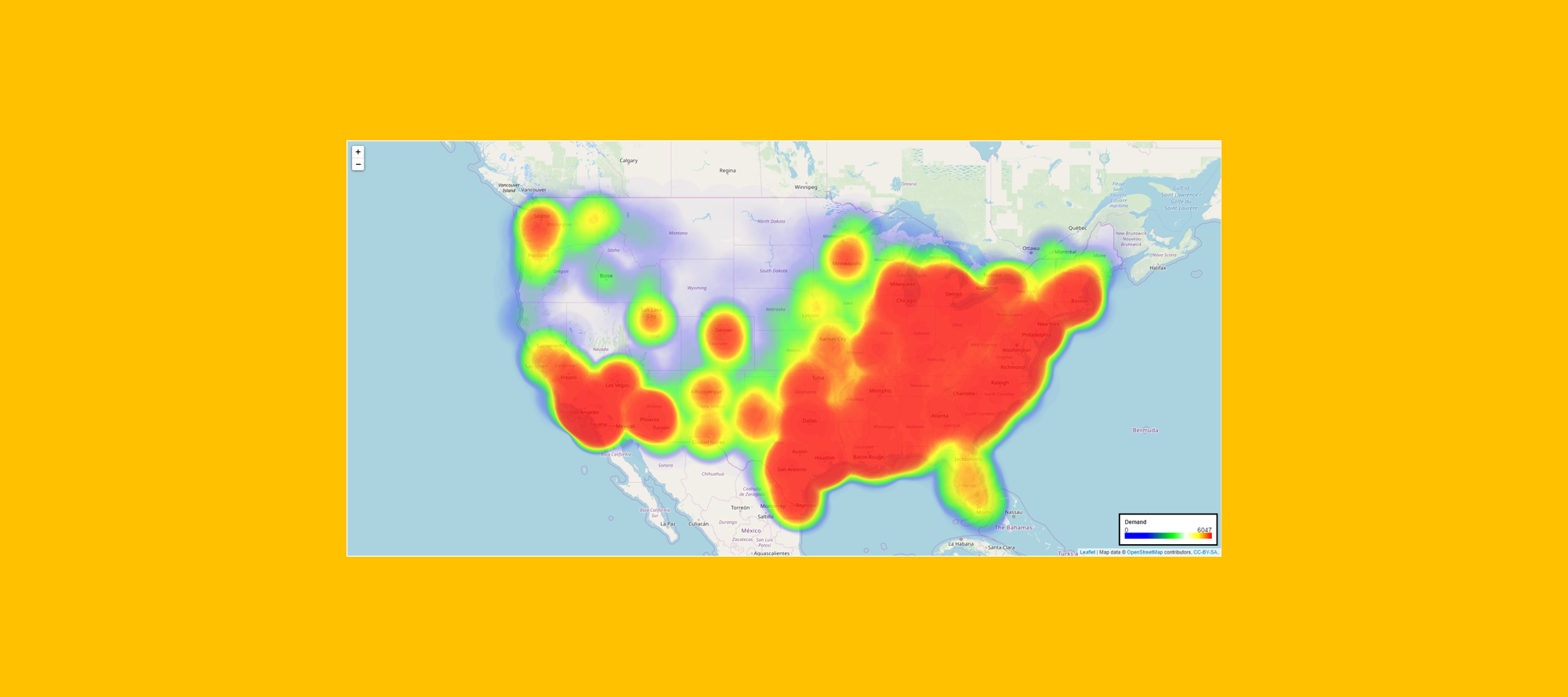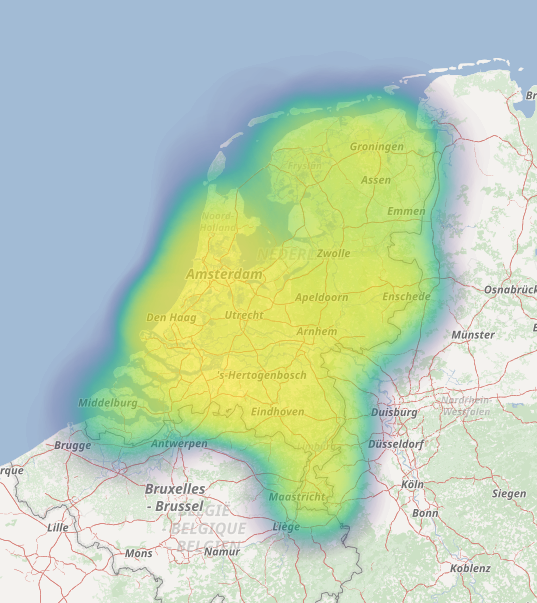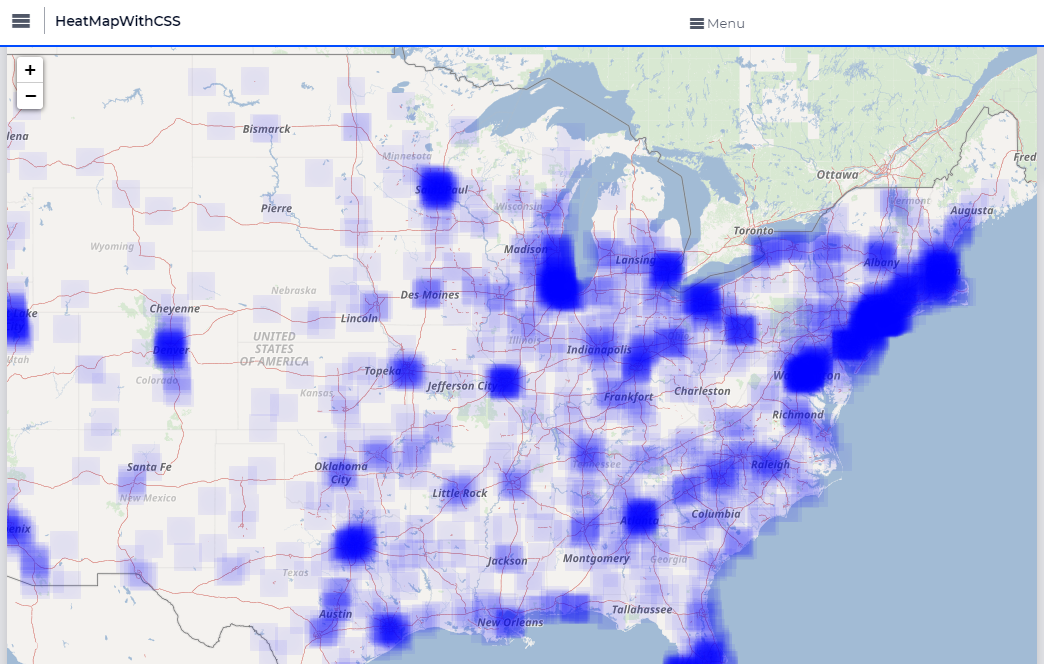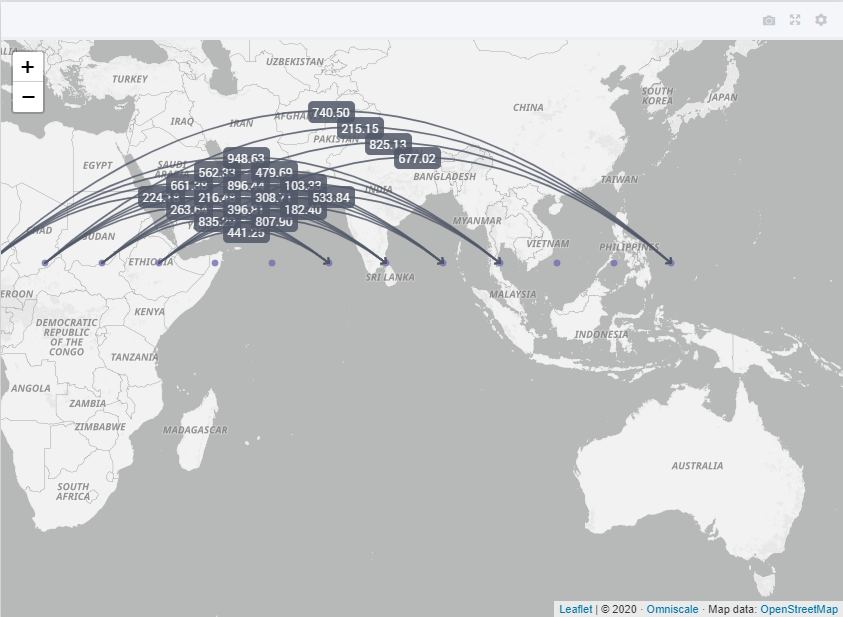Hi Community,
As part of keeping up with technology trends and improving experience we have been working on upgrading the Map/Network widget from OpenLayers to Leaflet framework. The underlying technology will change and you might notice some small visual differences, but you will not need to make any changes to the widget. The functionality and configuration will remain the same.
Some noticeable visual changes:
- Arcs will be drawn differently. Earlier we used a custom algorithm to draw the arcs. Now arcs drawn from right to left or bottom to top will be drawn with a downward curve, and left to right or top to bottom will be drawn with an upward curve. This makes it slightly more intuitive. The users will be able to determine the direction just by the way the arcs are drawn.
- We have improved the relative sizing algorithm for node sizes by relating the surface area of the nodes in each node set instead of relating radius of the nodes. This improves the visual representation of the node sizes as the area is twice as big if the node size value is twice as large.
Map widget with OpenLayers (Current)
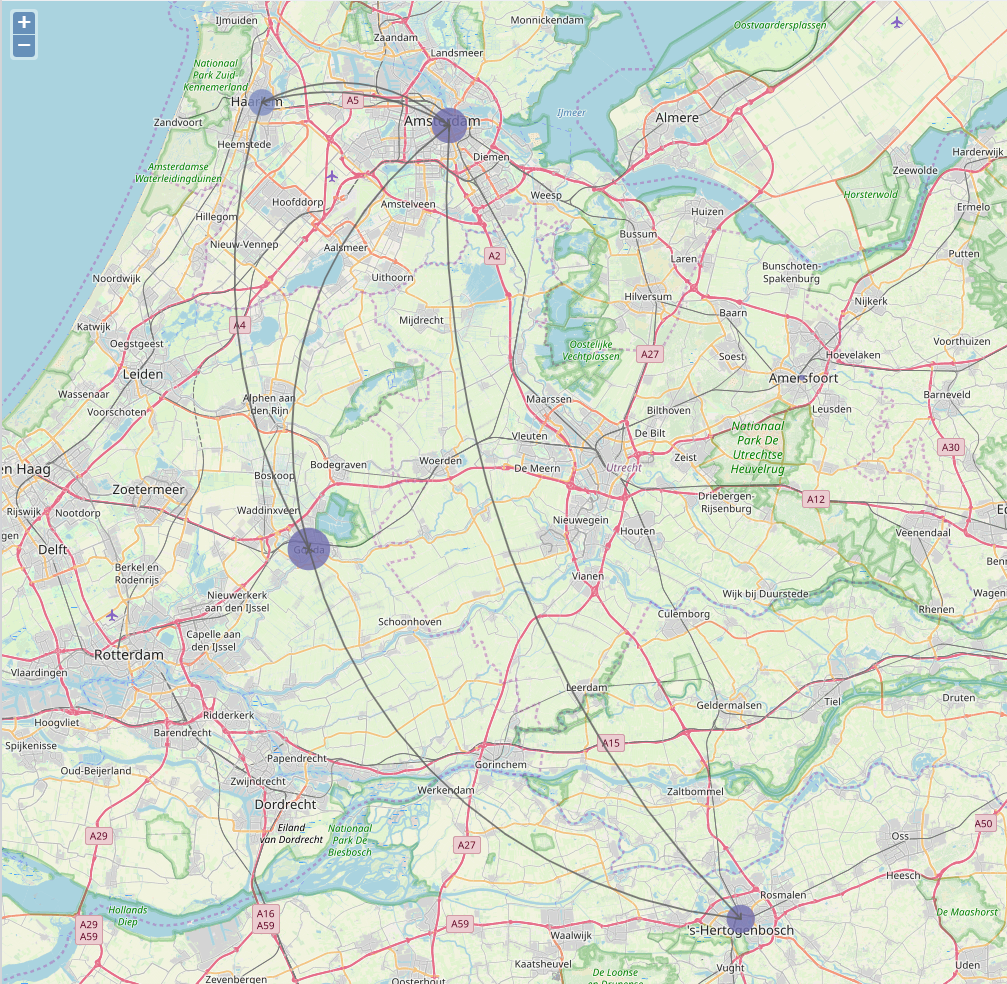
Map Widget with Leaflet and improvements
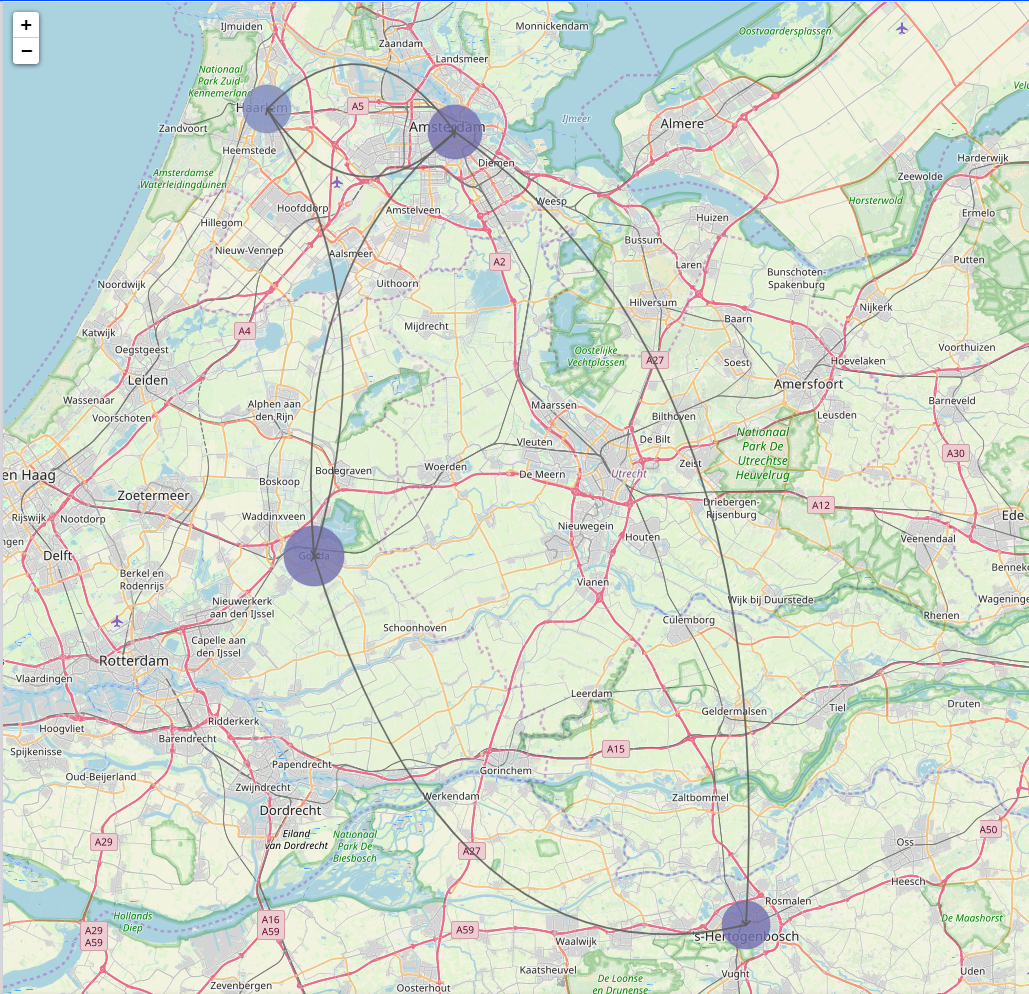
New Features that can be expected:
- Maximum Reference Value: We are introducing a new option for each node set such that node sizes are calculated based on a defined reference value. If no value is defined, the sizes are relatively sized based on the maximum value of the size identifier. This allows you to relatively size nodes from different node sets with the same reference as well.
- Nodes with size 0 or NULL will not be drawn anymore.
- Ability to add icons to nodes. The icons will be drawn inside the nodes. It makes it easy to represent different node sets like Factories or Depots etc, with icons.
- Ability to control the order of nodes sets to determine which node sets should be drawn on top of others in case there are overlapping nodes.
- Custom tooltips for nodes and arcs. Similar to other widgets, we will extend the ability to define custom tooltips for nodes and arcs to display information.
- Enabling annotations on arcs as well. You can apply annotations to arcs and change styling similar to nodes. The custom styling will apply to the arc as well as the label. You need not have different CSS for each element of the arc.
- Store focus on arcs. You will be able to leverage store focus functionality on arcs just as you can on nodes.
- Improved performance. The map will be able to accommodate higher number of nodes and arcs.
- Heatmaps on the maps. Heatmaps can be used to show additional information to help users with trends or other intuitive data.
HeatMap Example:
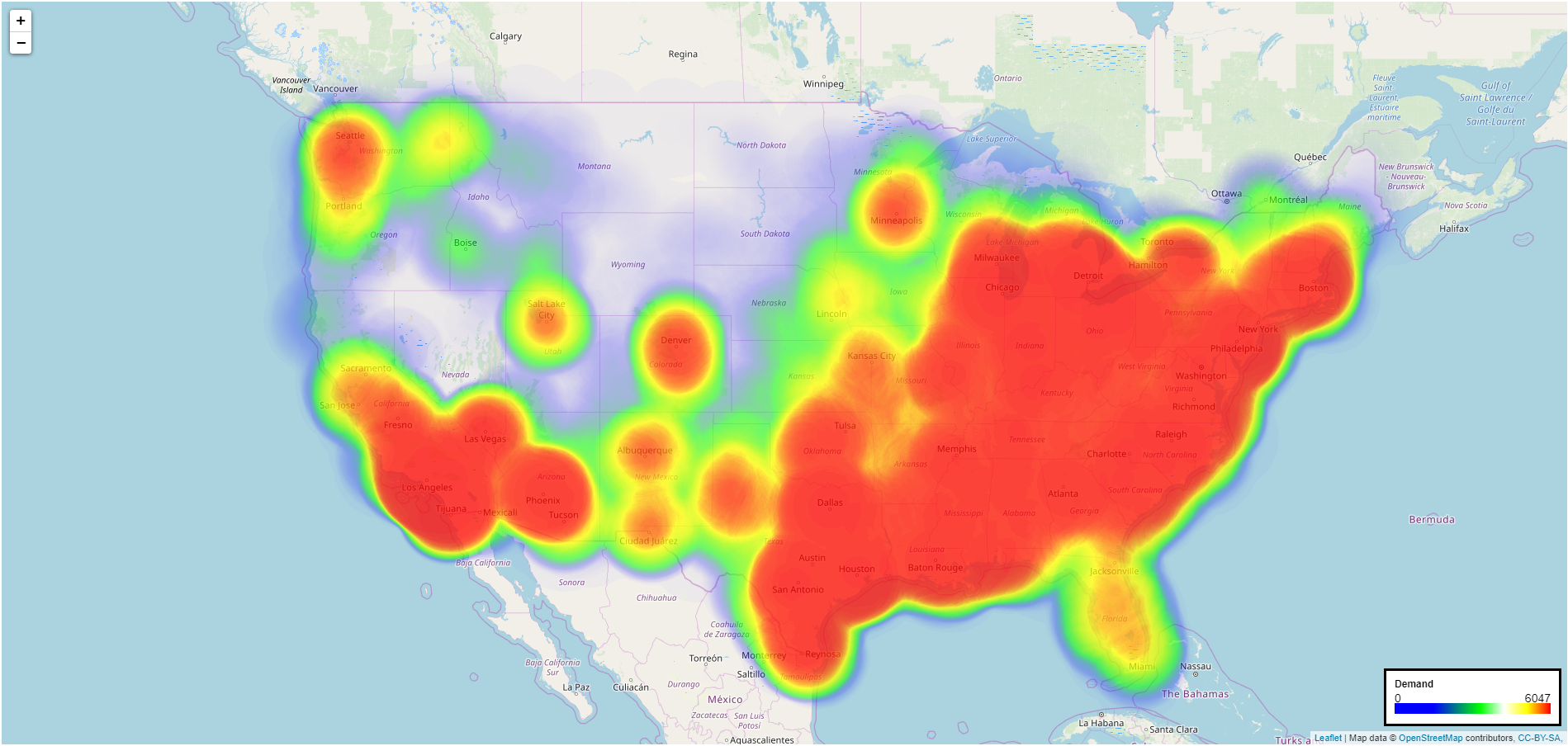
We value your feedback and would love to hear what you think of the above list.
Thanks,
Pratap

